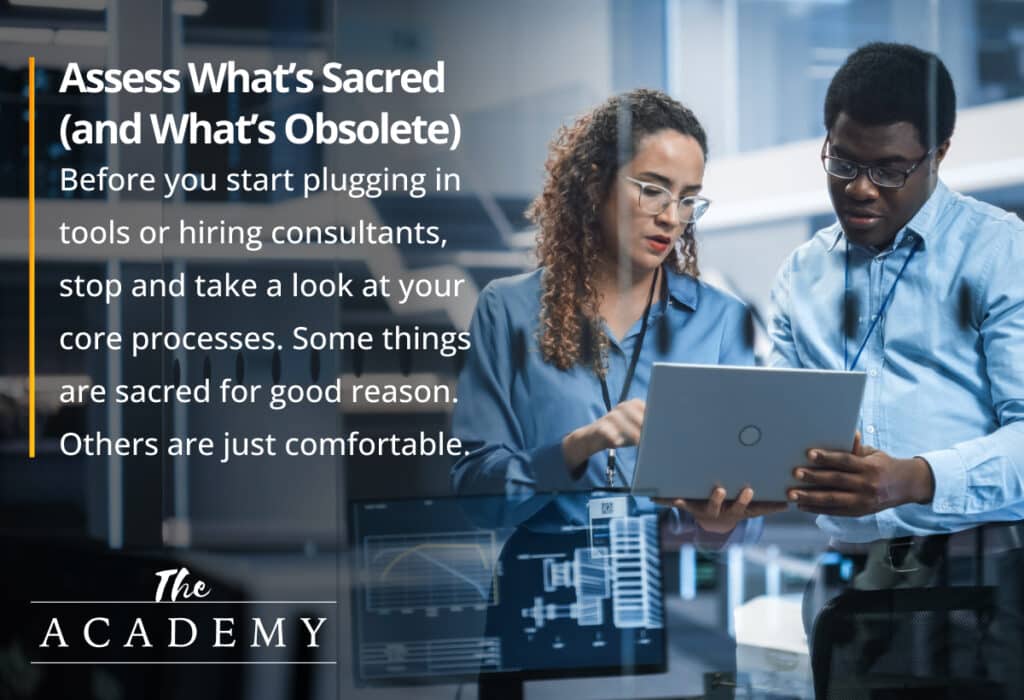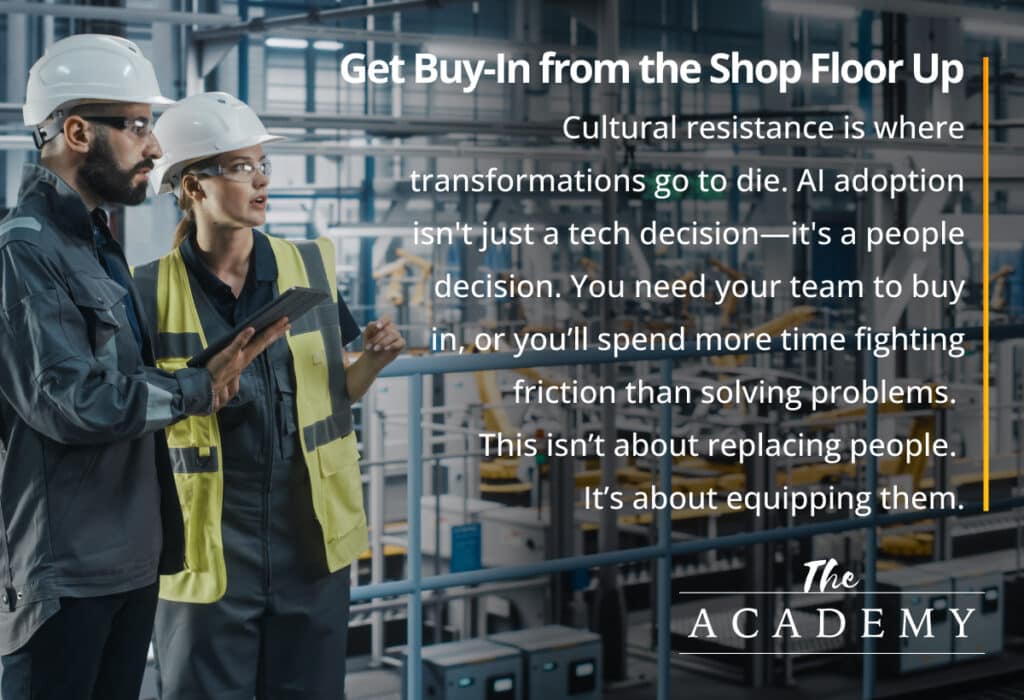
It Feels Like 1994 Again
I remember 1994 like it was yesterday. A time when people were proudly tossing around brand new terms like “World Wide Web”, “IP Addresses”, and “Web Browser” like they had some secret handshake. Fast forward to today, and it’s all “Custom GPTs”, “Agentic”, and “Generative AI.”
Back then, business owners were divided—some convinced it would never affect their industry, and others diving in headfirst with sky-high expectations and little understanding.
Some reading this won’t remember the once ‘crazy’ story that went ‘viral’ in 2001 (was that even a term yet?) about a guy who vowed to live an entire year getting everything he needed delivered from the internet. DotComGuy – Wired
Back then, it was a stunt. Today? That’s Tuesday. DoorDash, Amazon, Instacart—they’re regulars on our porches.
So yeah – as an old guy – this feels very familiar. We’re back in that same moment now, only this time, the wave is artificial intelligence, and it feels a lot faster.
So once again, leaders are trying to figure out how to ride it without getting crushed.
This isn’t our first digital rodeo.
The problem isn’t recognizing that AI is important. Most business owners I speak with get it. The question now is: How do you adopt new tools without losing the legacy strengths that got you here? How do you make sure your people, your values, and your quality don’t get steamrolled by the latest tech trend?
Think of this as a playbook you can start with—something to help you take the first few steps if you’re a practical, frugal, no-time-to-waste business leader like most of the folks I work with (and like me, honestly).
Play #1: Assess What’s Sacred (and What’s Obsolete)

Before you start plugging in tools or hiring consultants, stop and take a look at your core processes.
Ask yourself:
- What systems or traditions do we consider non-negotiable?
- Are they truly serving us, or just familiar?
- Where are we losing time, money, or opportunity?
This is your “legacy audit.” Some things are sacred for good reason. Others are just comfortable.
Play #2: Start with a Smart Pilot
Jumping headfirst into a full-scale AI overhaul? That’s the Webvan approach—and if you remember them, you know how that ended.
Instead, pick a single, high-impact area. Examples:
- Predictive maintenance on your machines
- Quoting automation in your sales process
- Demand forecasting using historical data
- Visual inspection or quality control using AI vision tools
Start small. Measure carefully. Prove ROI. Then expand.
Play #3: Get Buy-In from the Shop Floor Up

Cultural resistance is where transformations go to die. AI adoption isn’t just a tech decision—it’s a people decision. You need your team to buy in, or you’ll spend more time fighting friction than solving problems.
How to start:
- Involve employees early, especially those closest to the process
- Be honest about what’s changing (and what isn’t)
- Share the wins and the learnings from your pilots
This isn’t about replacing people. It’s about equipping them.
Play #4: Stay Grounded in Business Value
AI is cool. Dashboards are cool. Automation is cool. But you know what’s cooler? Profit.
Make sure every AI initiative maps clearly to a business goal:
- Can we produce faster?
- Can we reduce downtime?
- Can we support our sales team better?
- Can we eliminate waste?
If you can’t measure impact, it’s just a shiny object.
What to Watch Out For
Don’t:
- Buy AI software just because your competitor did
- Treat AI like an IT project (it’s a leadership and cultural shift)
- Assume people will automatically adopt the change
- Use vanity metrics instead of real business KPIs
Do:
- Align AI tools with actual pain points
- Bring your team along on the journey
- Set realistic timelines and expectations
- Learn from past tech failures (remember Kozmo.com?)
Monday Morning Moves
Not sure where to start? Same here—sort of. I don’t have all the answers, and frankly, I don’t think anyone truly does right now. We’re all figuring this out together, one small step at a time. But here’s what I’ve been seeing from other business owners and what we’re starting to explore inside our own company. Maybe these ideas will help you get moving as well.
These aren’t hard rules but just a few simple, doable moves that can help you test the waters without diving in blind:
- Identify one legacy process that’s slowing you down. It might be quoting, scheduling, or quality checks…just pick one.
- Ask your team where they’re already using AI tools on their own (they probably are). You might be surprised how much experimentation is already happening.
- Brainstorm a small pilot project. Something low-risk, but high enough impact that you can actually learn from it.
- Define what success looks like in real business terms. Dollars saved, hours reclaimed, fewer errors—whatever matters to you.
- Set a 30-day goal and review progress weekly. Don’t wait a year to evaluate. Start small, start fast, and keep it moving.
This is the same approach we’re trying to take. Not perfect. Not polished. But pointed in the right direction and always learning.
Mindset Matters
- You don’t need to be first. But don’t be last.
- Culture eats code for breakfast
- Protect what works. Upgrade what doesn’t.
This moment is about balance. You can embrace new tech and honor what made your business great. That’s real leadership.
Want to See AI in Action?
Check out these articles for real-world examples of how manufacturers are already integrating AI:
- Check out this article for real-world examples of how manufacturers are already integrating AI. And let the stories of Webvan and Pets.com remind you: this isn’t about hype. It’s about getting the timing, the culture, and the execution just right.
- Superagency in the Workplace: Empowering People to Unlock AI’s Full Potential at Work — McKinsey
And let the stories of Webvan and Pets.com remind you: this isn’t about hype. It’s about getting the timing, the culture, and the execution just right.
AI won’t install an air conditioner for you. But it might tell you why it’s about to break before it does.
Welcome back to 1994.
Most Popular Articles

Seeing Favicons in Your Google Search Results? Here’s Why…
Have you noticed anything different in your Google Search results lately? Google added tiny favicon icons to its organic search results in January. It was…

Business Growth and Digital Marketing News & Tips 11-17-24
Are you encouraging and rewarding innovation? Lee Cockerell is the former Executive Vice President of Operations at Walt Disney World. A lover of traditional red…

Business Growth and Digital Marketing News & Tips 11-27-24
A culture of gratitude "Feeling gratitude and not expressing it is like wrapping a present and not giving it." – William Arthur Ward Beyond being…






